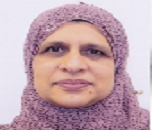Day 2 :
Keynote Forum
Edward Bernacki
Johns Hopkins University School of Medicine, USA
Keynote: BENEFITS OF WORKPLACE ONSITE CLINICS IN A FOOD AND BEVERAGE MANUFACTURING COMPANY
Time : 09:35-10:10

Biography:
Bernacki received his MD at Rutgers New Jersey Medical School and his MPH at the Yale School of Public Health. He is a Professor of Medicine and Director of the Johns Hopkins School of Medicine (JHSOM), Division of Occupational and Environmental Medicine. Administrator of the Johns Hopkins Self-Insured Workers’ Compensation Insurance Plan. Dr. Bernacki is a Past President of the American College of Occupational and Environmental Medicine (ACOEM). He is most noted for work that relates to the use of Occupational Medical Guidelines, the design, development and initiation of unique cost containment vehicles in the major medical and workers’ compensation insurance arenas.
Abstract:
Background: Onsite clinics provide immediate onsite post-injury care as well as continuous assessment of injured employees to assure early return to work and appropriateness of medical care. They also provide various health wellness services (non-occupational, vaccination, physical examinations, etc.) to maintain the overall health status of employees and increase the productivity.
Objective: Assess the injury rates for a 9-year pre- and 9 year post-clinic implementation period.
Method: 46 onsite clinics were included in the analysis. Injury rates were calculated by determining the total number of work-related injuries per population. These rates were compared prior to and after clinic opening.
Results: At the time of clinic opening, the average injury rate was 27.4/100 employees. At year one post-clinic opening, the injury rate increased slightly to 27.6. This was due to an incrase in the reporting of more minor injuries. In subsequent years, the injury rate per 100 employees was 27.4, 26.9, 24.8 and 20.3 at year 2,3, and 4, respectively. At year 5 post clinic opening, the injury rate decrased to 14.3/100 employees. Subsequent to year 5, the injury rates averaged 13/100 employees per year.
Conclusion: Overall injury rates decrease approximately 50% after onsite clinic established. The most marked decline occurs after 4 years of clinic establishment.
Keynote Forum
Tsunehisa Makino
Fuji-Oyama Hospital, Japan
Keynote: EXPOSURE TO ENVIRONMENTAL CHEMICAL SUBSTANCES IN MEDICINE FOR IN VITRO FERTILIZATION (IVF-ET) SYSTEMS
Time : 10:10-10:45

Biography:
Abstract:
Introduction : Very little has been discussed concerning the health hazards posed by environmental chemical substances with regard to assisted reproductive technology(ART), although in vitro fertilization and embryo-transfer(IVF-ET) has been becoming more popular over the last two decades in reproductive medicine. 
Materials and Methods : Highly sensitive and specific chromatographic and spectrometric assays have been developed for the measurement of several common but important chemicals including perfluorinated compounds (PFCs), polybrominated diphenyl ethers (PBDEs), and phthalates (DEHP,MEHP). After establishing the reference concentration standards for these chemicals in human fetomaternal environment specimens, we investigated the amounts of contaminations in culture media and culture dishes used for IVF-ET. The possible health hazards induced by exposure to amounts of chemicals detected in the culture media and/or culture dishes were then evaluated by analyzing epigenetic profile alterations in mouse embryonic stem cell (ESCs) and, in some cases, in human pluripotent stem cells (iPS cells).
Results : Levels of MEHP and PBDE that were 10-100 times higher than
those in fetomaternal specimens (approximately 1-10 ppb) were detected in some in vitro fertilization-embryo transfer(IVF-ET) media, suggesting that such concentration was capable of inducing reversible/irreversible changes in the epigenetic profile. In contrast only trace amounts of perfluorinated compounds were found in the same culture media.
Conclusion : The present study is the first admonitory report to evaluate the toxic and/or teratologic influences of chemicals inIVF-ET culture media. (This study was supported by a Health Science Grant from the Ministry of Health, Labour and Welfare, Japan)
- Environmental Health & Biomedical Waste | Toxicology|Pathogens | Diseases Transmission | Non Communicable Diseases
Location: Meliá Valencia Avenida Cortes Valencianas 52 Valencia 46015, Spain (Melia Meeting 4+5)

Chair
Cassandra Warner Frieson
Fall Injury Preventionn and Rehabilitation Center, USA
Session Introduction
Bruna Ferreira Silva
Federal University of Goiás, Brazil
Title: ANALYSIS OF SOME CHEMICAL ELEMENTS IN MARINE MICROALGAE FOR BIODIESEL PRODUCTION AND OTHER USES
Time : 10:45-11:10

Biography:
Bruna Ferreira Silva has begun her research studies with biofuels in graduation. She has published some papers in reputed journals and has completed her Master course at the age of 23 years in Chemistry Institute at Federal University of Goiás. She has experience in analytical chemistry, especially in microalgae, ICP, metals, biodiesel and gas chromatography.
Abstract:
Due to the currently abundant supply of marine microalgae, which can be found in seawater, as well as microalgae's ability to uptake different chemicals, it appears as a promising raw material with potential for many commercial uses. Despite having a high amount of metal in their biomass, the lipids within marine microalgae can be converted into biodiesel. Analyses of 26 chemical elements (Al, B, Ba, Be, Bi, Ca, Cd, Co, Cr, Cu, Fe, K, Li, Mg, Mn, Mo, Na, Ni, P, Pb, Sn, Sr, Ti, Tl, V, and Zn) were performed by ICP-OES with the goal of quantifying the inorganic content of marine microalgae's biomass. Regardless of the cultivation media used, microalgae presented differences in their chemical element profile. Strains showed a 12.9% to 36.3% mass of analyzed elements per dry biomass, which represent a relatively high percentage for a feedstock used in biofuels. Among the 36 assayed microalgae, Biddulphia sp., Planktolyngbya limnetica, Amphora sp. (1), Navicula sp. (3) and Synechococcus sp. are most indicated for this purpose as they contain a lower concentration of chemical elements when compared to other samples. However, their profile warns that water quality control is needed for toxic metals such as Ba, Cd, and Pb.
Jordi Olloquequi
Universidad Autónoma de Chile, Chile
Title: MOLECULAR PATHOGENESIS IN CHRONIC OBSTRUCTIVE PULMONARY DISEASE DUE TO BIOMASS SMOKE EXPOSURE
Time : 11:25-11:50

Biography:
Jordi Olloquequi completed his PhD in 2010 from the Department of Cell Biology of the University of Barcelona in collaboration with the Vall d’Hebron Hospital Research Institute (VHIR). After a postdoctoral research in that very group, he became Associate Professor at the University of Barcelona, Spain. At present, Dr. Olloquequi is a full professor at Universidad Autónoma de Chile. He is the Principal Investigator of a research project funded by the Chilean National Science and Technology Fund (CONICYT). His main research line aims to study the connection between inflammatory processes and disease, specially those in the respiratory and nervous systems.
Abstract:
In Chronic Obstructive Pulmonary Disease (COPD), inhaled particles and gases trigger an inflammatory response, favoring tissue proliferation in small airways and tissue destruction in lung parenchyma, in addition to the recruitment of immune cells to these compartments. COPD mortality and morbidity have increased significantlyworldwide in recent decades. Although cigarette smoke is still considered the main risk factor for thedevelopment of the disease, estimates suggest that between 25% and 33% of COPD patients are non-smokers. Among the factors that may increase the risk of developing COPD, biomass smoke (BS) has been proposed as one of the most important, affecting especially women and children in developing countries.
Despite the epidemiological evidence linking exposure to BS with adverse health effects, the specific cellular and molecular mechanisms by which this pollutant can be harmful for the respiratory and cardiovascular systems remain unclear. However, a considerable amount of evidence has shown the potential of BS as an enhancer of lung inflammation. On the other hand, an impairment of some innate immune responses after BS exposure has also been described. Regarding the mechanisms by which biomass smoke alters the innate immune responses, three main classes of cell surface receptors, the toll-like receptors, the scavenger receptors and the transient receptor potential channels have shown the ability of transducing signals initiated after BS exposure.
This conference is a comprehensive review of the immunomodulatory effects described after the interaction of BS components with pulmonary cell receptors, under a COPD-oriented point of view.
Dung Phung
Griffith University, Australia
Title: HIGH TEMPERATURE AND RISK OF HOSPITALIZATIONS, AND EFFECT MODIFYING POTENTIAL OF SOCIO-ECONOMIC CONDITIONS: A MULTI-PROVINCE STUDY IN THE TROPICAL MEKONG DELTA REGION
Time : 11:50-12:15

Biography:
Abstract:
The Mekong Delta Region (MDR) in Vietnam is highly vulnerable to extreme weather related to climate change. However there have been hardly any studies on temperature-hospitalization relationships. The objectives of this study were to examine temperature-hospitalization relationship and to evaluate the effects of socio-economic factors on the risk of hospitalizations due to high temperature in the MDR.
The Generalized Linear and Distributed Lag Models were used to examine hospitalizations for extreme temperature for each of the 13 provinces in the MDR. A random-effects meta-analysis was used to estimate the pooled risk for all causes, and for infectious, cardiovascular, and respiratory diseases sorted by sex and age groups. Random-effects meta-regression was used to evaluate the effect of socio-economic factors on the temperature-hospitalization association.
For 1oC increase in average temperature, the risk of hospital admissions increased by 1.3% (95%CI, 0.9-1.8) for all causes, 2.2% (95%CI, 1.4-3.1) for infectious diseases, and 1.1% (95%CI, 0.5-1.7) for respiratory diseases. However the result was inconsistent for cardiovascular diseases. Meta-regression showed population density, poverty rate, and illiteracy rate increased the risk of hospitalization due to high temperature, while higher household income, houses using safe water, and houses using hygienic toilets reduced this risk.
In the MDR, high temperatures have a significant impact on hospitalizations for infectious and respiratory diseases. Our findings have important implications for better understanding the future impacts of climate change on residents of the MDR. Adaptation programs that consider the risk and protective factors should be developed to protect residents from extreme temperature conditions.
Leticia Mora-Soler
Instituto de AgroquÃmica y TecnologÃa de Alimentos (CSIC), Spain
Title: ANTIOXIDANT AND ANTIHYPERTENSIVE NATURAL PEPTIDES IN DRY-CURED HAM BY-PRODUCTS
Time : 12:15-12:40

Biography:
Leticia Mora completed her PhD at the Universidad Politécnica of Valencia in 2010. As a posdoctoral researcher, Dr. Mora enjoyed a posdoctoral contract in Ashtown Food Research Centre, Teagasc, in Dublin (Ireland) and later, a posdoctoral Marie Curie Intra-European Fellowship FP7-PEOPLE-IEF, FOODSAF project in Royal Holloway University of London (Egham, UK). Currently, Dr. Mora is reintegrated at the Instituto de Agroquímica y Tecnología de Alimentos, CSIC, with a posdoctoral contract. She is involved in the FP7-PEOPLE BACCHUS project and is the fellow of the Marie Curie FP7-PEOPLE-CIG HIGHVALFOOD project. She has published more than 40 papers in peer-reviewed journals.
Abstract:
Meat industry produces tons of by-products that represent both an economical and environmental problem. Dry-cured ham manufactories are also important producers of by-products including all residues derived from the slicering of ham such as rinds, bones, fat, etc. On the other hand, proteolysis is one of the most important biochemical reactions occurred during dry-cured ham processing. It is responsible for the main changes in texture as well as for the generation of thousands of small peptides which influence in the characteristic aroma and flavor of the final product. Some of the sequences of these naturally generated peptides in dry-cured ham have also been described to exert biological activities such as antioxidant or antihypertensive.
Hypertension is one of the major risk factors for the development of cardiovascular diseases, stroke, and end-stage renal disease, and it has been the focus of attention in clinical and medicine research for the last decade. Main concerns in this matter are the secondary effects of antihypertensive drugs and, for this reason, current studies are based on new findings of naturally generated antihypertensive peptides which results less aggressive.
Peptides naturally generated and extracted using different solvents from dry-cured ham by-products were evaluated for their antioxidant activity using DPPH, ferric reducing-power, ORAC, beta-carotene, and ABTS methodologies. Their potential as antihypertensive peptides was also studied with the measurement of inhibition of Angiotensin-Converting Enzyme (ACE) and Endothelin-Converting Enzyme (ECE). The results suggest that dry-cured ham by-products constitute a good source of bioactive peptides with potential health benefits.
Maria Sitzia
Agris Sardegna, Italy
Title: EFFECT OF THE METEOROLOGICAL CONDITIONS ON DAIRY SHEEP PERFORMANCE
Time : 12:40-13:05

Biography:
Maria Sitzia, PhD, researcher in animal husbandry at Research Agency in Agriculture of Sardinia (AGRIS). She has carried out research on eco-physiology of forage species, on method of estimating biomass, the evolution of the vegetal structure of grazed sward, the techniques involved in managing different types of pasture. She has more than 20 years of research experience in small ruminant farming system, forage production, livestock management, animal production and sustainability of grazing systems. She is working on low-input farming systems for dairy and meat productions and is co-author of 25 scientific articles in peer-reviewed journals and 84 posters and/or oral communications.
Abstract:
Thermal stress negatively affects profitability of sheep production due to the decrease in animal health and to the reduction in weight gain and milk production. The aim of this study was to investigate the variation in animal performance and adaptability in response to annual weather fluctuation. A 16 autochthonous Sardinian dairy sheep were raised in a Stall feeding system (St) and their performance was compared with 16 animals raised outdoor in a Paddock feeding system (Pd), without any shelter or shading effect. Both groups were fed with the same amount of forage and concentrate. The trial was carried out in N-W Sardinia, between July 2011 and May 2013. In both years, for each season, a 4 week measurement period was assessed. Outdoor and indoor meteorological factors were monitored continuously and analyzed weekly on hourly base; biometeorological indices were calculated. Feed on offer and that refused, water consumption were measured daily in all groups. Body condition score, body weight, milk yield and milk composition and cortisol blood level were measured weekly. Treatments were characterized by different climate conditions. St, with more comfortable environmental conditions, showed higher milk yield and lower milk fat content than Pd only in winter, as well as body weight in winter and spring. Any difference was detected for the cortisol blood content. In comparison with the first, the second year, characterized by a more favorable weather, allowed better animal performances and an increment of cortisol level. Strategies aimed at reducing thermal stress of animal during winter would lead to improvement feed conversion efficiency for milk production.
Firoza Haffejee
Durban University of Technology, South Africa
Title: THE USE OF HIV POSITIVE HEALTH CARE VOLUNTEERS TO PROVIDE INFORMATION ABOUT HIV/AIDS IN LOW SOCIO-ECONOMIC ENVIRONMENTS
Time : 13:05-13:30

Biography:
Dr Firoza Haffejee completed her PhD in 2013 at the University of KwaZulu-Natal. She is currently a senior lecturer in Physiology and Epidemiology at the Durban University of Technology in South Africa. She runs community engagement projects in Kenneth Gardens, a low socio-economic environment in the city of Durban, where she has also worked on research projects in collaboration with members from Virginia Commonwealth University. Her research is currently funded by the National Research Foundation (South Africa); UID: 99315
Abstract:
The prevalence of HIV is high among South African women. We previously established that women in a low income community in South Africa had general HIV/AIDS knowledge but were unable to identify essential prevention behaviours. It was also established that health care volunteers provided support within the community.
As part of a larger study, a qualitative interview was conducted with an HIV positive health care volunteer who offers social support in the area. This volunteer has no formal training but after being diagnosed with HIV 18 years ago, she attended short courses and sat in on nursing lectures in order to educate herself about HIV.
She now uses her knowledge to help people with HIV live a better life and has received recognition through educating others via motivational speaking. She is regarded as someone people can confide in, and get assistance from, in her words a “community counsellor”. She also visits schools to create awareness about HIV. Her work indicates that listening to first-hand experience of a person who is HIV positive increases the level of engagement. Furthermore receiving information from someone who is not an authoritative figure is a different approach and a welcome change because of the stigma that still surrounds HIV.
We conclude that if more HIV positive people are trained to educate others, it will go a long way in increasing knowledge about HIV transmission, uptake of voluntary testing as well as the removal of the stigma that surrounds HIV.
- Environmental Health and Ecology | Energy | Environment and Earth Science
Location: Meliá Valencia Avenida Cortes Valencianas 52 Valencia 46015, Spain (Melia Meeting 4+5)

Chair
Edward J. Bernack
Johns Hopkins University School of Medicine, USA
Session Introduction
Carla Idely Palencia-Aguilar
Central Florida University, USA
Title: ENVIRONMENTAL AND ECONOMIC SUSTAINABILITY IN ADVERSE CONDITIONS
Time : 14:15-14:40

Biography:
She is an Industrial Engineer from Javeriana University in Colombia with Masters degrees in: Manufacturing Engineering at Worcester Polytechnic Institute, MBA at Clark University, Master in Finance at Boston College in the USA, Master in Environmental Engineering at Ecole des Mines d'Ales in France; with specializations in Management at Harvard Ext University in the USA, Environmental Architecture at Lund University in Sweden, Limnology, Water Quality and Bioindicators from the Austrian Academy of Science, and Groundwater modeling from ITC, the Netherlands. She was also Professor at Los Andes University and Jorge Tadeo Lozano University in Colombia, as well as Consultant for various companies and Speaker in Conferences and Exhibitions around de word.
Abstract:
Very few examples of operating projects that integrate social, economic, environmental, technical and ecological aspects in developing economies, with multiple adverse conditions: climate change, political issues, low income, skepticism, wrong conceived governmental regulations for mining operations, and so on, could be found.
This work includes determination of optimal land use by multi-criteria analysis with three main variables: geostatistics, evapotranspiration and groundwater characteristics. It also uses indicators such as NDVI to proof how the mining interventions had improved the characteristics of the zone, how risk assessment and risk management are key components for environmental sustainability and how innovative techniques in dehydration could add value to agriculture, silviculture and cattle raising products from rehabilitated zones to assure economic sustainability.
The use of remote sensing, meteorological stations, piezometers, sunphotometers, geoelectric analysis among others; provide the information for modelling the actual situation and predict future needs. Temporality aspects from MODIS and ASTER images are also included not only for agriculture applications but also for water resource management and water quality assurance.
Organic Agriculture applications have been tested with different products such as Goldenberry and Quinoa, both with international demand. Zeodratation is used to dehydrate the products by means of pressure changes and zeolites that behave as adsorbant and as molecular sieve selectors of water versus nutrient content. Thousands of experiments in the past 8 years have been taking place in order to define the best quality and most efficient curve per tested product. The results show healthier products with concentrated vitamin and antioxidant contents.
Hermann Fromme
Bavarian Health and Food Safety Authority, Germany
Title: BROMINATED FLAME RETARDANTS – OCCURENCE AND HEALTH RELEVANCE
Time : 14:40-15:05

Biography:
Hermann Fromme has completed his MD at the Ludwig-Maximilians-University, Munich, Germany. He is the head of the Department of Chemical Safety and Toxicology of the Bavarian Health and Food Safety Authority and associate professor at the Ludwig-Maximilians-University, Munich. Central topics of the department are the identification of chemical exposures in environmental media and humans. He published numerous papers, especially in the field of indoor air and dust analysis and human biomonitoring.
Abstract:
Brominated flame retardants (BFRs) are a large group of different substances used in numerous products to prevent fire hazards. Some of them are persistent in the environment, accumulate in the food chain and are of toxicological concern, while for others current data are limited. Meanwhile, BFRs have been found in many environmental media, foods, and biota including humans.
We will present recent findings obtained from monitoring data in different environmental media like indoor air and dust as well as dietary exposure. Furthermore, we give an overview of human biomonitoring data on BFR levels in blood and breast milk. Current estimates of the overall exposure of the general population using different relevant subsets are also addressed. All of these data are discussed in relation to currently available toxicological reference values used for risk assessment purposes.
Obviously, the exposure of the general population varies considerably in different parts of the world and even within countries. Polybrominated diphenyl ethers (PBDEs) and hexabromocyclododecane (HBCD) show very often the highest exposure levels. Nevertheless, other “emerging” BFRs like tetrabromobisphenol A (TBBPA) and bis(2-ethyl-1-hexyl) tetrabromophthalate (TBPH) have to be considered in future. For most of the substances dietary intake was the major source. Additionally, non-dietary human exposure via inhalation and oral ingestion of house dust can make a significant contribution to the total intake under some circumstances, particularly for toddlers
Kafiye Eroglu
Koç University School of Nursing, Istanbul, Turkey
Title: PERSISTENT ORGANIC CHLORINATED COMPOUND RESIDUES IN THE BREAST MILK OF FEMALE SEASONAL AGRICULTURAL WORKERS IN TURKEY
Time : 15:05-15:30

Biography:
EroÄŸlu is a professor of Obstetric and Gyncolojical Nursing in School of Nursing. She is interested in women health, reproductive and sexual health, gender (in particular, sexuality, sexual education, fertility, family planning metods, climacteric, pregnancy, breastfeeding, reproductive health of agricultural workers). She has published more than international 20, national 50 papers in reputed journals and has been serving as an editorial board member of repute. Presently he has been working at the at the Koç University School of Nursing.
Abstract:
Although organochlorine compounds (OCCs) used in industry and agriculture are not produced and not used legally at the present time, they may cause undesirable effects by passing to humans through various routes due to their long- time persistence in the external environment and transmission to babies through breastfeeding. Retrospective descriptive study aimed to investigate organochlorine compounds in women who breastfeed and work as a seasonal agricultural worker (SAW). Retrospective descriptive this study aimed to investigate OCCs in women who breastfeed and work as a SAW. The study is sponsored by Scientific and Technological Research Council of Turkey (TUBITAK) with 114S163 number. It was carried out on 100 woman worked as SAW for the last one year. Data were collected a questionnaire by face-to-face interview and analyzed the residues of 27 items of organochlorine pesticides (OCPs), Dichlorodiphenyltrichloroethane (DDT) metabolits and polychlorinated biphenyls, (PCBs) from persistent organic pollutants (POPs) in mothers’50 mL breast milk. Descriptive statistics, Chi square test and correlation analyze were used to evaluate data. Polychlorinated biphenyl (PCB)28 component was determined in almost all women’s milk and more than half of collected milk contained Beta-Hexachlorocyclohexane (HCH), PCB52, pp’-Dichlorodiphenyldichloroethylene (DDE), Hexachlorobenzene (HCB), PCB70, pp’-Dichlorodiphenyltrichloroethane (DDT) ve Gamma HCH respectively. Moreover, PCB101, PCB183, PCB118, PCB105, PCB208, PCB170 ve Alfa-HCH components were detected in very few women (2-9 %). It was recommended that necessary legal regulations, education and control studies on health, and follow-up studies investigating health status of mothers and their babies.
Young-Min Kim
Sungkyunkwan University School of Medicine, Korea
Title: ENVIRONMENTAL BURDEN OF DISEASE CAUSED BY AIR POLLUTANTS FROM MUNICIPAL SOLID WASTE INCINERATORS
Time : 15:30-15:55

Biography:
Young-Min Kim has completed her PhD from Seoul National University and postdoctoral studies from Sungkyunkwan University School of Medicine and Emory University Rollens School of Public Health. She is a research professor of Sungkyunkwan University School of Medicine and works for Environmental Health Center for Atopic Diseases, Samsung Medical Center as a senior researcher. She is also joining the Task Force Team for the Response of Climate Change, Korea Center for Disease Control and Prevention as an advisory committee. She has published more than 15 papers in reputed journals.
Abstract:
Although people living in the vicinity of incinerators have wondered whether incinerators cause any health burden, few studies have attempted to quantify the integrated health burden on the population. To estimate the attributable burden of disease caused by incinerators in Seoul, Korea, a source-specific exposure was applied to the estimation of the environmental burden of disease (EBD). With particular attention on the development of a measurement means of the source-specific, exposure-based population attributable fraction (PAF), we integrated air dispersion modeling, Geographic Information Systems (GIS), the population distribution of exposure, and the exposure-response relationship. Attributable burden of disease of four air pollutants (PM10, NO2, SO2, and CO) emitted from four municipal solid waste incinerators (MSWIs) in Seoul was estimated using the estimated PAF and the disability-adjusted life years (DALY) method. The PAF for NO2 to all-cause mortality was assessed at approximately 0.020% (95% CI: 0.003–0.036%), which was the highest among all air pollutants. The sum of the attributable burden of disease for four pollutants was about 297 person-years (95% CI: 121–472) when the incinerators observed to the emission standards. The attributable burdens of respiratory disease and cardiovascular disease were about 0.2% and 0.1%, respectively, of the total burden of respiratory and cardiovascular diseases of Seoul citizens for the year 2007. Although the air emissions from one risk factor, an incinerator, are small, the EBD can be significant to the public health when population exposure is considered.
Rabia Medjane
Faculty of medicine of Oran, Algeria
Title: PREVALENCE OF CONTACT DERMATITIS AMONG HAIRDRESSERS AND BEAUTICIANS IN ORAN CITY (ALGERIA)
Time : 15:55-16:20

Biography:
Rabia Medjane has completed her Master in Occupational Medicine at University Hospital and graduation from the Faculty of Medicine of Oran (Algeria). She is
currently working as Hospital Assistant at The University Hospital of Oran, Algeria.
Abstract:
This study evaluates the prevalence of contact dermatitis in the hairdressing and esthetics sectors, and describes the clinical aspects encountered. This is a descriptive transversal clinical epidemiological study. The tested population was recruited on accessibility and volunteerism. It covers hairdressers and/or beauticians at the city of Oran, which are visited in their rooms and invited to answer a standardized medical questionnaire, followed by a clinical examination skin. Patch tests of the standard battery are made by this staff having an allergic contact dermatitis appeared for less than a year, post studies in training and an esthetics center complete the study.
The tested population consists of 175 women: 120 hairdressers, 28 beauticians and 27 beauticians and hairdressers. Dermatoses were recorded in 51 subjects, 40 cases by clinical examination and 11 cases only by anamnesis. Skin diseases can be divided into: dermatitis irritation: 31 cases, allergic contact dermatitis: 8 cases, dermatitis traumatic 11 cases and nail involvement found in only 1 hairdresser, 39 of contact dermatitis are found, 27 cases by clinical examination and 12 cases by anamnesis. Gloves representing the essential means of individual protection in this staff, where the gloves’ wearing is found in 82% of subjects. 117 subjects (67%) use latex gloves. Only 4% of the subjects have vinyl gloves. Of the 8 cases meeting the criteria of allergic contact dermatitis only 3 subjects responded to the call for patch testing. Positivity to Nickel sulfate, to formaldehyde and paraphenilene diamine (PPD) is found.
Ali Emami Meibodi
University of Allameh Tabataba’i, Iran
Title: THE IMPACTS OF ENERGY MANAGEMENT AND ENVIRONMENTAL HEALTH ON THE INDEXES OF SOCIETIES’ PROGRESS AND SUSTAINABLE DEVELOPMENT
Time : 16:30-16:55

Biography:
Ali Emami Meibodi has completed his PhD from Departmant of Economics, University of Surrey, UK, in 1998. At present, he is associate professor of Energy Economics at University of Allameh Tabataba’i , Tehran, IRAN. He has published two books and more than 36 papers (some of them in the reputed English Journals) in the area of Energy and Environment subjects.
Abstract:
For most of the twenty century, growing reliance on fossil fuels was almost universally celebrated as a good, a symbol of society progress. But nowadays, with the rise of the environmental concerns, efforts are mounting around the world to curtail and manage the consumption of all fossil fuels, due to air pollution, land pollution, water pollution, noise pollution and the climate changes.
Following two important meetings held in 1972 and 1992 that were deemed as milestones in the environmental context, society’s progress measurement indexes have been changed. These indicators have been raised basically since 1992, after holding the earth summit in Rio.
It is necessary to mention, that during 1920 to 1960, merely, the economic indicators were used for measuring and comparing the progress of different countries.
During the 1960 to 1992, social indexes, such as, Gross National Happiness (GNH), Index of Social Health (ISH) was considered as well. After 1992, in the Global stage, economic, social and environmental indexes are considered, altogether, for comparing societies’ progress.
For instance, since 1992, environmental outcomes of manufacturing enterprises have been under considerations. So, words such as environmental efficiency and green productivity are raised.
In this paper, the major society progress indexes, such as sustainable development, environmental efficiency, green productivity, Environmental Impact Assessment, Index of Sustainable Economic Welfare (Integrated Environmental and Economic Accounting), are introduced, reviewed and analyzed.
The aim of this paper is to analyze, the environmental protections (international, regional co-operation and national policies) to improve energy management and Environmental Performance Indexes. In other words, the Impacts of Energy Management and Environmental Health on the Indexes of Societies’ Progress and Sustainable Development are discussed.
